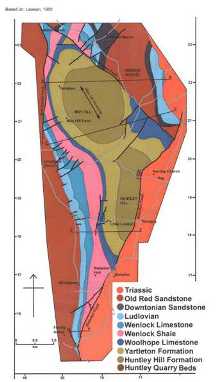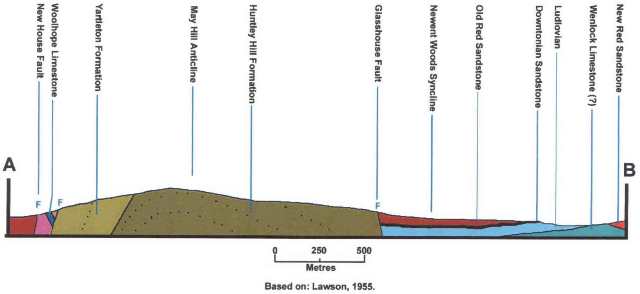
May Hill is the southern most expression of the Malvern Hills complex and occupies an area of around seven square miles on the border of Gloucestershire and Herefordshire. It is the most conspicuous landscape feature in the southern part of the Abberley and Malvern Hills Geopark and the views from the top are spectacular in all directions. The striking differences in landscape produced by the diverse underlying geology can be clearly seen in the contrast between the hilly uplands, produced by the older Palaeozoic rocks to the west, and the flat plain of the Severn Vale to the east, formed by softer Mesozoic sediments. Even on the hill itself there are minor variations in relief caused by the diversity of Silurian rocks outcropping (Dreghorn 1973). These range from hard limestones to soft sandstones and siltstones and contain a varied assemblage of characteristic Silurian fossils.
The underlying structure of the area is that of a NE trending pericline, truncated by faulting in the north and south, and bounded by more faults to the west and east; the eastern fault being an extension of the major East Malvern Fault that separates the Palaeozoic rocks from the Mesozoic sediments of the Vale. Within these faults, the rocks are folded into a dome, which has been eroded, leaving the oldest rocks exposed in the centre of the dome – the May Hill inlier


